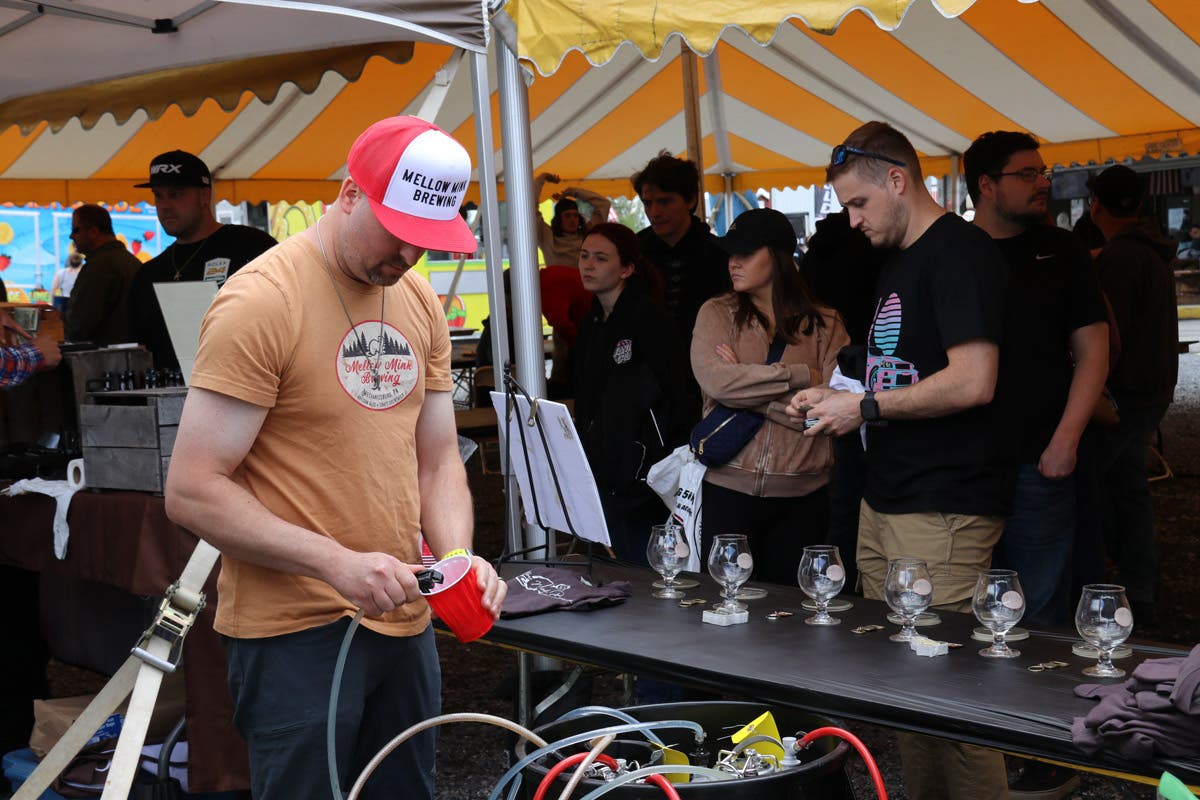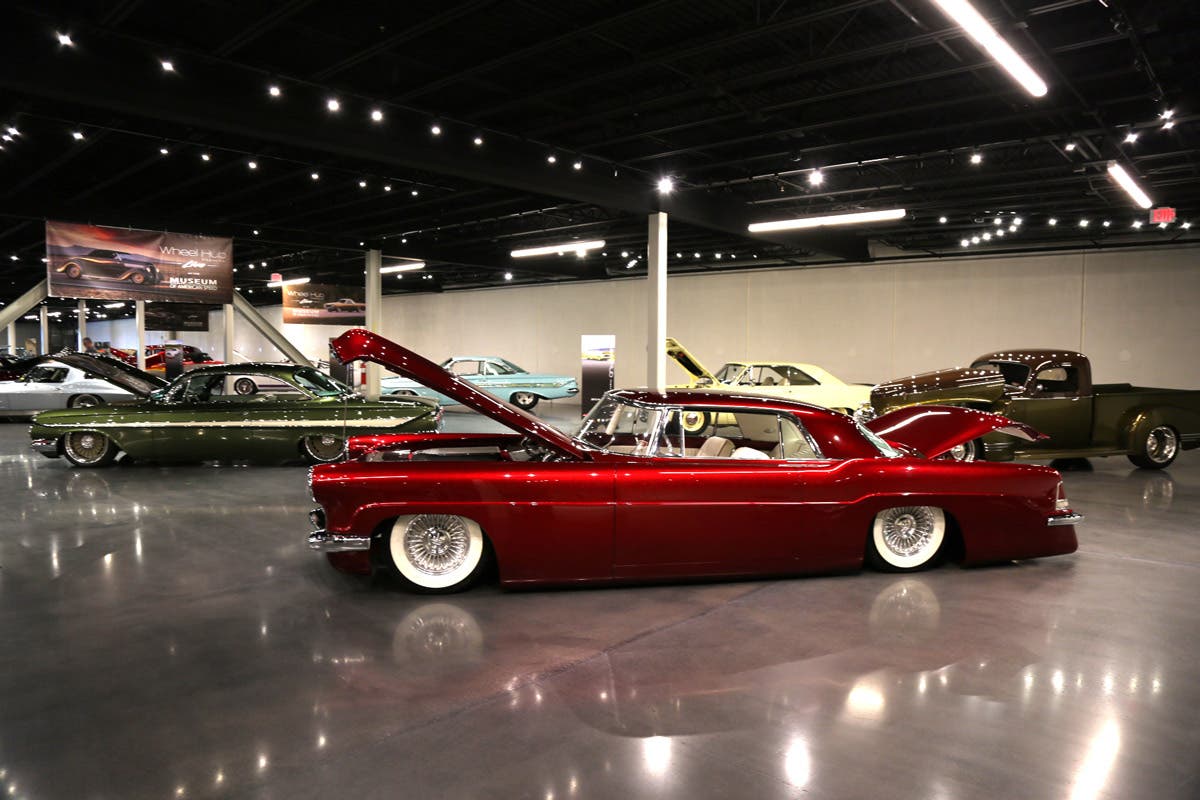Charger Rescue: Going… going… saved!
Richard Gies purchased this 1966 Charger and a boat load of parts from his nephew and set out to make it better than new. With some help, he turned it into a show-stopper.
Rusted-out 1966 Charger is rescued from storage shed and made better than new
Story and photos by Al Rogers
In the fall of 2006, Old Cars Weekly reader Richard Gies took ownership of a well-used – and perhaps abused – 1966 Dodge Charger. His nephew had owned the Charger for nearly 10 years with the dream of one day restoring the Mopar. As years passed and time ticked away, reality set in. One day, while sizing up the car, it hit him. “There’s only one person who could take this car and give it a new life – Uncle Richard.” He contacted his uncle and soon got to the point: “Would you come and get the Charger out of my shed and take it to your shop?”
Richard Gies’ passion for cars and the craft of restoring them began in his 20s. For the next 40 years, he perfected his skills at the local Ford dealership as an auto body technician. As new car prices started to escalate in the ’70s, he started purchasing rebuildable late-model cars, fixing them up, then using them as daily drivers. However, his first total restoration project was a 1979 Mustang Indy Pace car that he purchased in 2002. The pony car was in decent shape, and although it was not a wreck, it was still a project. In less than three years, Richard had restored it to show car level, and he still owns it.
His skill level, patience and ability to stay the course would be tested during the 1966 Dodge Charger’s restoration.
“I knew the Charger would be a challenge, but I looked at it as an adventure to see just how many of the things I’d learned and performed on automobiles in the past could find their way into the restoration.
“Besides, the unique body style of the 1966 Charger was only manufactured for two model years (1966 and 1967), and this one is the rare, one-year-only offering with the 361-
cubic-inch engine,” Richard said. “I was satisfied with the 1979 Mustang Pace Car results and figured it was time to give the Charger a try.”
To give perspective to the challenge posed by the Charger, it was so rusted that the rear leaf springs touched the top of the inner quarter panels. The floor pan, trunk pan and frame rails required replacement. The car had a history in Bay City, Mich., which is in the heart of the Midwest “rust belt,” and the harsh Michigan winters did a number on the Charger’s metal. To compound the effects of salt exposure, many automobile manufacturers used a simple process to treat sheet metal prior to the application of primer and paint in the 1960s. Years later, they started using a salt test booth within the factory to monitor the effect of salt on specific models.
The 1966 Dodge Charger came with a slew of replacement parts that Richards’s nephew had begun collecting early in his ownership. Included was a set of new OEM fenders, a used right-side quarter panel and a new left-side quarter panel. In his quest to find additional parts, Richard had earned the trust from a parts collector. The two had struck up a friendship, and without their mutual respect, the restoration of the Charger could have been delayed and the results detrimental. A used trunk lid purchase kicked things off and started the bond between the two men.
Richard put his hands on every part of the car during the restoration. He replaced the floor boards from the firewall rearward and restored the rear frame rails. A neglected cross member was repaired while the front frame rails were replaced and new side aprons were installed.
The 265-hp, 361-cid V-8 engine and TorqueFlite automatic transmission were removed and rebuilt. Everything in the engine was replaced except the crankshaft. The engine block was painted the correct Mopar blue. With safety in mind, a dual master cylinder was added with power brakes, but the Charger retains the front and rear drum brakes.
The exterior of the car was sanded, primed and painted the correct Turquoise Blue color.
Most of the trim moldings were damaged, and with replacements nearly impossible to find, Richard was forced to repair each piece. The restoration process required straightening and extensive polishing. This is an art in itself for which few possess the patience and knowledge to complete.
Richard reupholstered the front and rear seats himself and installed new carpet. Using the internet, Richard restored the instrument cluster. Metal interior parts were repainted and new carpet was installed.
Upon review of the heater box, it was discovered mice had taken up residence and it had to be disassembled and restored.
With the exception of the windshield, the glass is original.
The fully documented 1966 Dodge Charger exemplifies class, attention to detail and sophistication with better-than-factory fit and finish. Richard, with the help of his son Paul and his nephew, turned this Mopar into a show-stopping beauty. The restoration was completed in the fall of 2011 for the Frankenmuth, Mich., Autofest. It was an award winner at the yearly event and has gone on to earn best-in-class awards in a handful of 2012 events.
“Back in the day, the car was ahead of its time.” The same can be said today. One can only dream about what this body style would look like paired up with today’s technology.
--------------------------------------------------------------------------
Charging ahead in ’66
The Charger was Dodge’s answer to the fastback craze. It was a participant in the “Dodge Rebellion,” an advertising and promotional campaign that pushed high-performance motoring, and it was dramatically different than all competitors when it arrived.
The Charger was based on the Coronet platform and had essentially the same lower body styling, but with a more streamlined fastback roof and rich interior appointments and trimmings. With its low and wide roof line, the Charger showcased a drastic interpretation of fastback styling. Its “electric razor” grille was also quite distinctive looking.
It was big and wide, which gave it a distinctive “flat” look to distinguish it from other muscle cars. It combined Mopar’s bright, clean interior styling with some of the company’s best engine options to create a package that had no peers.
Dodge called its 1966 Charger a “Sports Sedan,” even though it was really a sport coupe. This was an attempt to widen its sales appeal beyond the youth market and to stress its cargo-carrying abilities. With a full-size 117-inch wheelbase and 203.6 inches of overall length, the Charger was certainly roomy. And its 75.3-inch width didn’t hurt either. With seating for only four on its front and rear bucket seats, the Charger was not really sedan-like in the passenger-carrying category, either. Its real appeal was its sporty flavor.
Soon after the Charger arrived on the scene, almost every car enthusiast magazine rushed to take a test drive and publish the results. The Charger was new and exciting and having the car featured on the cover of a magazine was a sure way to pump up circulation and newsstand sales.
Most magazines tested Chargers with the 383-cid V-8, a big-block engine that cranked out 325 hp at 4,800 rpm. This combination was quite fast, with Car and Driver registering a 7.8-second 0-to-60 mph time and a quarter-mile time of 16.2 seconds at 88 mph. With the same engine and transmission, Motor Trend reported an 8.9-second 0-to-60 time and 16.3 seconds at 85 mph in the quarter-mile. The huffing-and-puffing Hemi could shave 2 seconds or more off those acceleration times.
Nevertheless, young-at-heart American dads canny enough to convince their better half that the Charger was really a “kind of station wagon” were likely to go for the base 230-hp, 318-cid V-8 or step up to the 361-cid/265-hp option, each fitted with a two-barrel carburetor. Once to the big-block 383 or the even heftier 426-cid “Street Hemi,” you spoke “muscle car” when talking about a Charger.
A nicely outfitted Charger with power steering, power brakes, a limited-slip differential, a Rallye suspension, a few other goodies and the 383 hooked to a three-speed automatic transmission went out the door for slightly more than $3,100. Total production of 1966 Chargers hit 37,300 cars. Only 468 had Hemi’s, of which a mere 218 featured TorqueFlite.
Love Chargers? Check out these related resources:
- Read about Mother Mopar in "Mopar: The Performance Years"
- Read "Muscle Car Confidential: Confessions of a Muscle Car Test Driver"
- Hang fine Mopar art on your wall with Michael Irvine's Dodge Challenger piece








